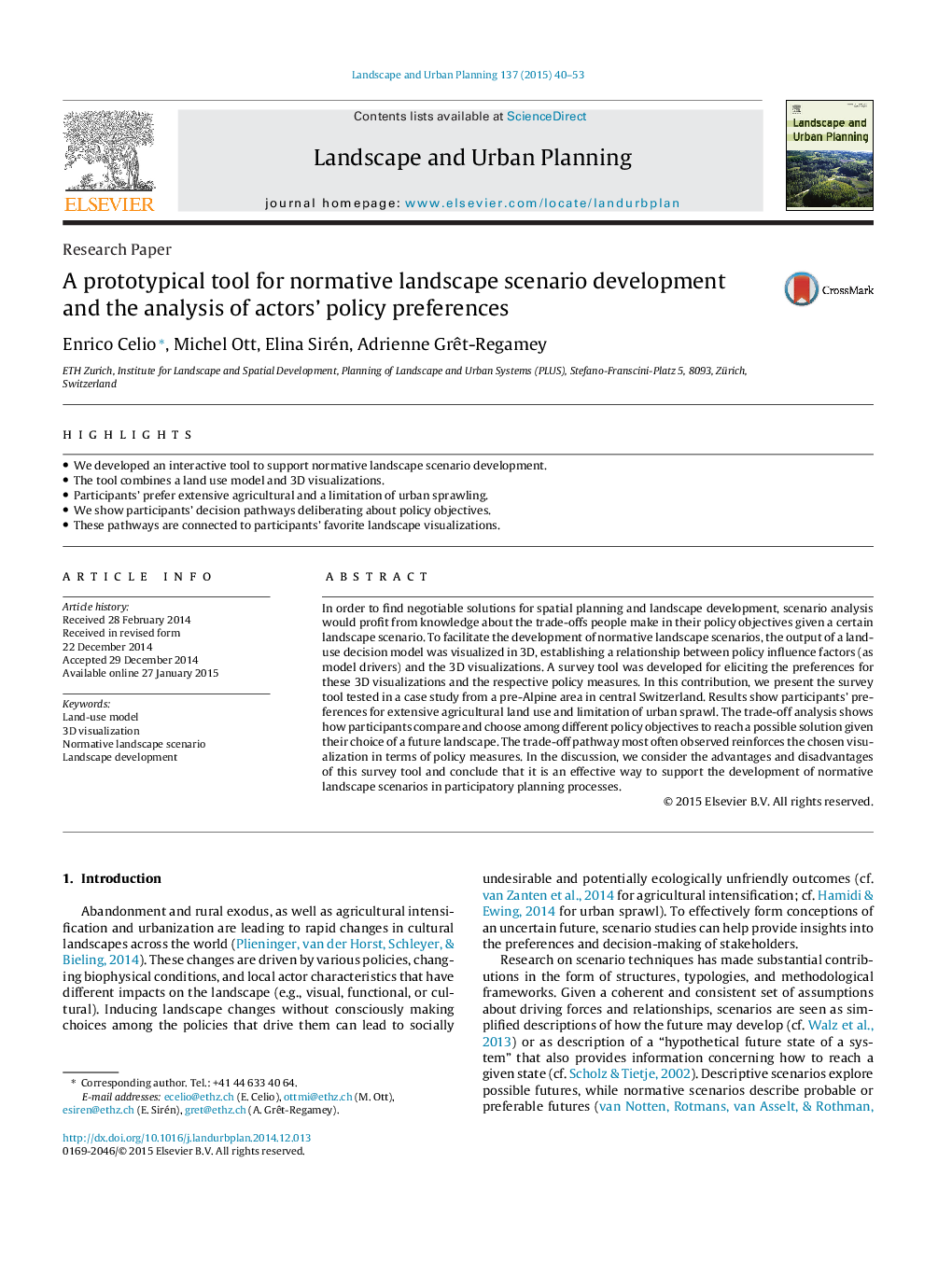| Article ID | Journal | Published Year | Pages | File Type |
|---|---|---|---|---|
| 1049174 | Landscape and Urban Planning | 2015 | 14 Pages |
•We developed an interactive tool to support normative landscape scenario development.•The tool combines a land use model and 3D visualizations.•Participants’ prefer extensive agricultural and a limitation of urban sprawling.•We show participants’ decision pathways deliberating about policy objectives.•These pathways are connected to participants’ favorite landscape visualizations.
In order to find negotiable solutions for spatial planning and landscape development, scenario analysis would profit from knowledge about the trade-offs people make in their policy objectives given a certain landscape scenario. To facilitate the development of normative landscape scenarios, the output of a land-use decision model was visualized in 3D, establishing a relationship between policy influence factors (as model drivers) and the 3D visualizations. A survey tool was developed for eliciting the preferences for these 3D visualizations and the respective policy measures. In this contribution, we present the survey tool tested in a case study from a pre-Alpine area in central Switzerland. Results show participants’ preferences for extensive agricultural land use and limitation of urban sprawl. The trade-off analysis shows how participants compare and choose among different policy objectives to reach a possible solution given their choice of a future landscape. The trade-off pathway most often observed reinforces the chosen visualization in terms of policy measures. In the discussion, we consider the advantages and disadvantages of this survey tool and conclude that it is an effective way to support the development of normative landscape scenarios in participatory planning processes.
